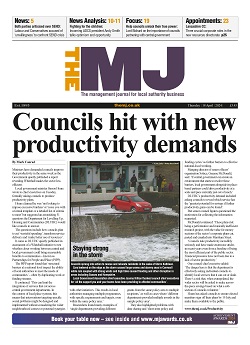Public expectations today are vastly different from that of even a decade ago.
Not only are everyday things, from banking and utilities to entertainment and news, readily available online and by mobile, but the quality and speed of access to these has significantly gathered pace too.
With people accustomed to choice as consumers, they demand the same from their public services.
Councils have come a long way in terms of their approach to digital, with new technologies like AI and robotics enabling local government to transform everything from back office functions and processes, to how they engage with residents and communities.
Yet a fifth of the public we polled for our Local State We’re In survey were not aware of any council services being available digitally, and 48% say they would prefer more online services.
There is more to do to respond to the digital demands of the population and make the most of the technology that is available to deliver services more effectively.
However, the transformative power of emerging technology doesn’t come from one-off online transactions.
It comes from bringing it all together to create a sense of ‘expansive intelligence’ - deep insight into people’s behaviour that allows you to reshape your organisation and your offer.
For example, some authorities have achieved a single view of debt, but few have combined this with an understanding of the drivers of indebtedness to shape interventions, particularly when it comes to vulnerable people.
Councils hold significant data assets and some are better at managing their information than others, but most have a long way to go.
Opportunities exist to consolidate and transform data into rich insight that underpins strategic decision-making.
Taking the case of fostering, councils have found that identifying likely carers and aligning communications to their preferences can increase the ratio of enquiries to successful placements significantly from under 10% to over 80%.
Blending behavioural science with data and technology can help councils develop strategies, services and information which encourage people to make better decisions, empower them to act themselves where appropriate, and improve their outcomes.
This could range from using clearer communications to promote self-service for simple transactions and encouraging behaviour change like recycling via technology enabled waste collection, through to understanding decision moments in more complex cases and shaping interventions accordingly.
Overall, digital can enable the fundamental shift that is needed, from a culture of providing services to a much more participative approach that engages individuals and communities to achieve outcomes for themselves.
It’s time to ask yourself, have you really considered how disruptive technologies can fundamentally change the relationship between your council and your residents for the better?
This article is brought to you by PwC

